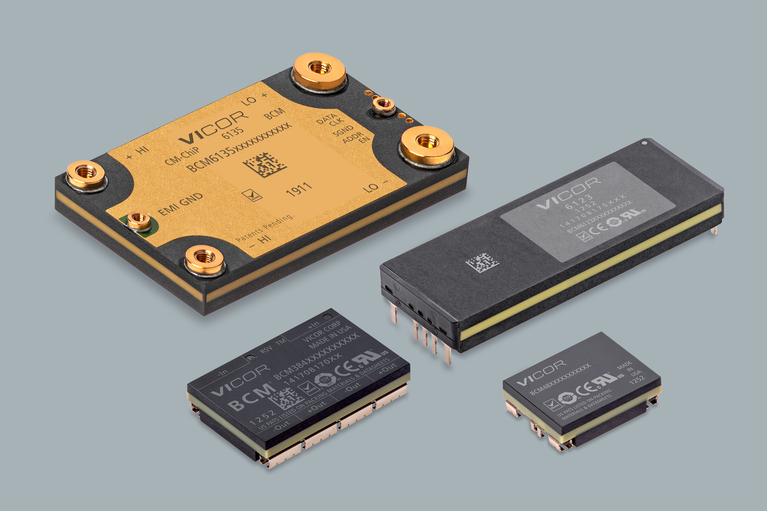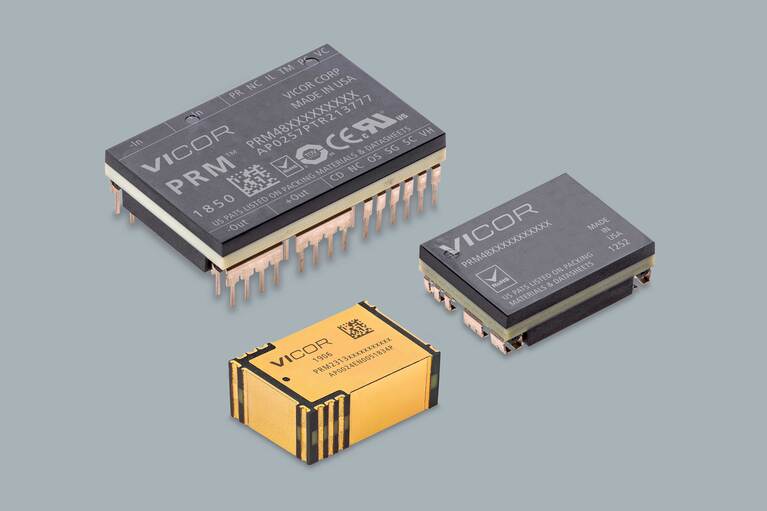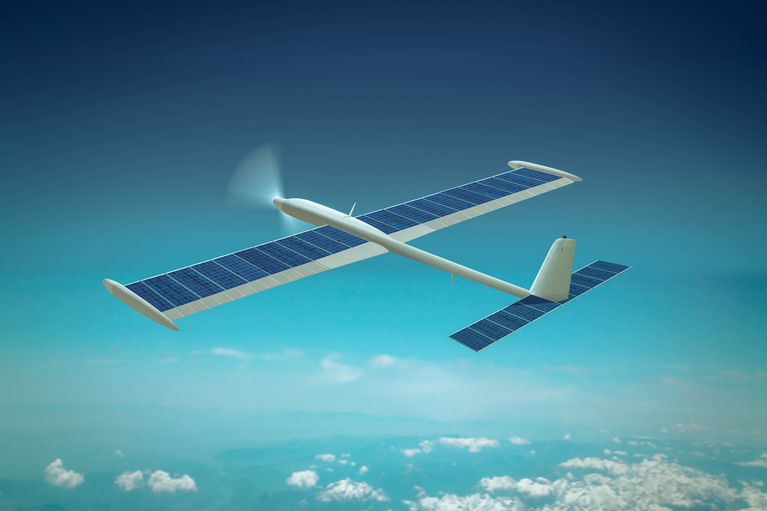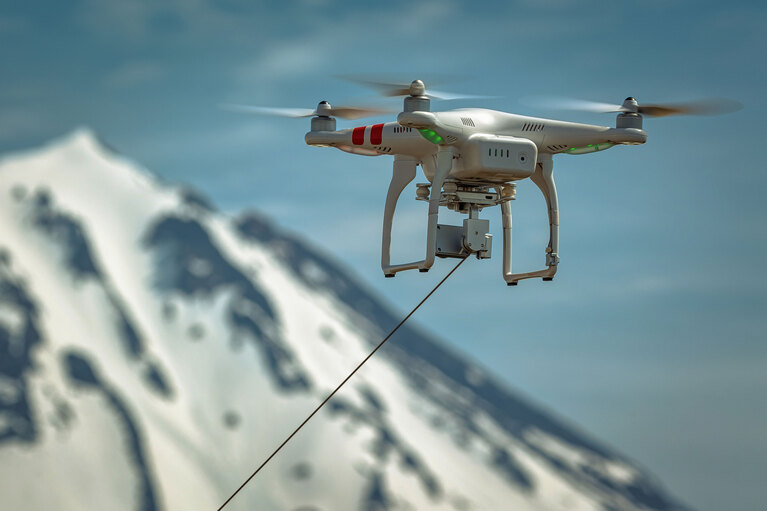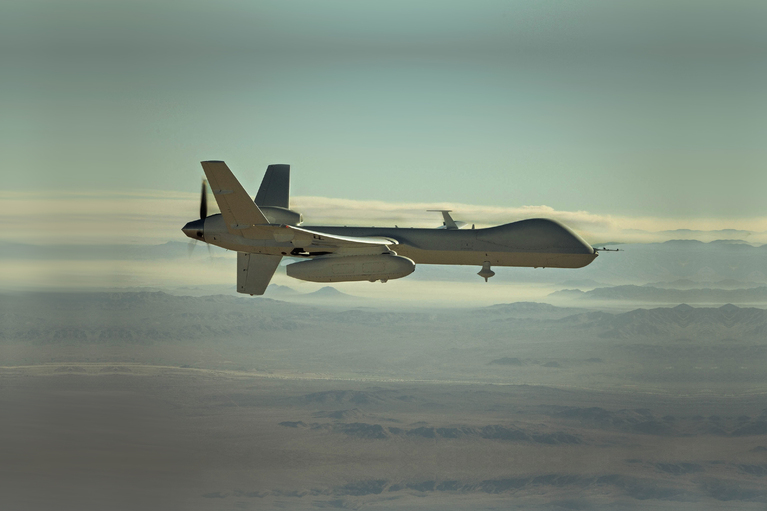
UAV Market Trends and Power System Seminar 2025 Taipei, Taiwan
Power modules enable top performance and innovation for today’s advanced UAVs

High density and efficiency

Scalable to higher power

Low height

Lightweight
Vicor high performance power modules require dramatically less space than traditional discrete power solutions while providing high efficiency and power density, whether going from HV to SELV or SELV to PoL. This enables increased run time and productivity without sacrificing navigation, sensing and safety features.

By adopting the modular approach power modules can be paralleled or swapped, allowing designs to accommodate new loads or changes in power. Easily scale power to meet increasing requirements in UAV systems, while allowing the same power architecture to be deployed across diverse UAV platforms.
Vicor high-efficiency and thermally adept power modules significantly reduce the heat generated and effectively remove it from the UAV, increasing its reliability and agility without taking up additional space or adding weight.
Vicor provides tested and qualified power modules to build power delivery networks that can be designed quickly without all the wasted time and effort to test and certify a new discrete design. This enables our customers to get to market faster, giving them a distinct advantage over their competition.

For UAVs powered by high voltage batteries Vicor high-density BCM fixed-ratio, isolated converters safely convert a high-voltage input into standard SELV output to power a 48V bus. BCM power modules are the most efficiently way to convert high voltage to SELV voltages.

For UAVs powered by lower voltage batteries such as 100V, Vicor DCM power modules provide regulated 24 or 48V (as shown) distribution from the battery for payloads and downstream converters. The Vicor DCM is a highly efficient, DC-DC converter operating from an wide input range to generate an isolated output.

On board a remote operated vehicle, Vicor BCM power modules isolate and step-down the high voltage from the tether to a 48V SELV. The compact, lightweight BCM reduces the size and weight of the UAV, as well as to dramatically reduce the diameter and weight of the tether itself to reduce weight, size and drag.
Once a 48V bus is established – from either a 48V battery or a higher voltage source converted to 48V – Vicor power modules at the point-of-load deliver high performance with the smallest footprint. The Vicor DCM is an isolated, regulated DC-DC converter that provides superior power density. The non-isolated Vicor ZVS buck and buck-boost regulators provide an efficient, lightweight and compact solution for supporting a wide range of loads from 2.2V to 54V. When high power is required, the PRM 48V to 48V voltage regulator has an extremely wide output range to conform to point-of-load requirements.

Isolated fixed-ratio
Input: 800 – 48V
Output: 2.4 – 55.0V
Current: Up to 150A
Efficiency: Up to 98%
As small as 22.0 x 16.5 x 6.7mm
PRM pre- and post-transformation regulators
Non-isolated regulated
Input: 48V (36 – 75V)
Output: 48V (5 – 55V)
Power: Up to 600W
Peak efficiency: Up to 98%
As small as 22.0 x 16.5 x 6.73mm
High-density, high-power modules enable lighter, safer, lower-cost tether cables to extend missions
High-efficiency, high-density modules free up space for advanced communications and extend range
World’s first commercialized hydrogen fuel cell power pack for UAVs
New class of tethered drones revolutionizes maneuverability and remote communications
Wireless charging delivers next generation productivity for robotics and UAVs
UAV Market Trends and Power System Seminar 2025 Taipei, Taiwan
Power modules enable top performance and innovation for today’s advanced UAVs
High-efficiency, high-density modules free up space for advanced communications and extend range
High-efficiency class of UAV depend on solar power to meet its long flight time requirements
High-density, high-power modules enable lighter, safer, lower cost tether cables to extend missions
This class of unmanned vehicle is powered and controlled via a tether from a ground-based power source assisting in extended missions
DCM DC-DC converters double the internal bus power and help keep the aircraft as light as possible
High-altitude long-endurance (HALE) UAVs are essentially flying satellites, designed to operate at extremely high altitudes for extended periods

